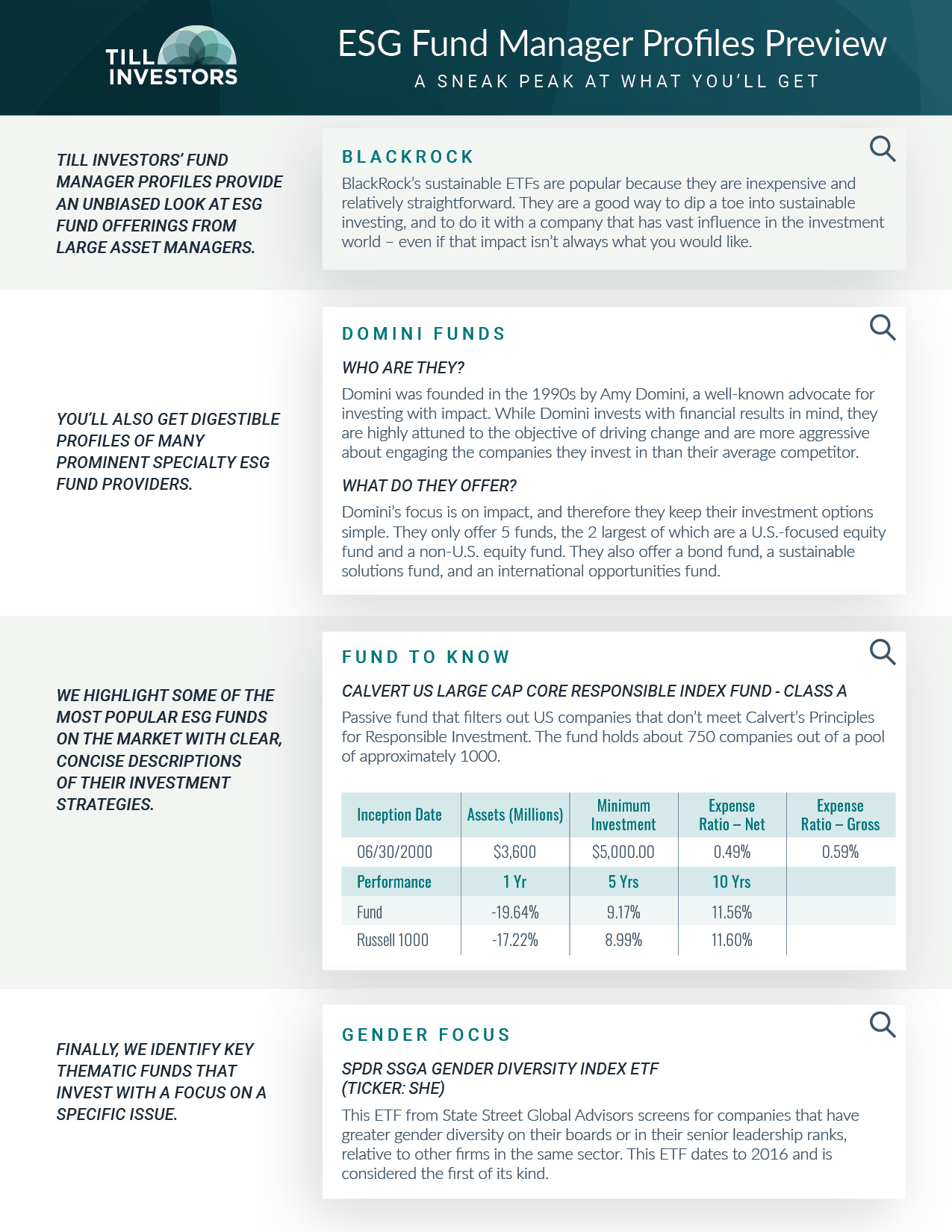
At Till Investors, we’ve consistently found that:
- The idea that you can invest in sustainable businesses that suit your values is news to most people.
- Once they hear the news, they want to do it.
That seems like a natural reaction to us. But what does it mean to invest sustainably? Will you have to research business strategies? Learn a whole new way to invest? Throw out your current financial plan and start over?
Nope. You don’t have to do any of those things to put yourself on the path of being a sustainable investor. All it really takes is a shift in outlook and a different set of questions.
So It’s Similar to Traditional Investing?
If you’re the sort of person who has put some money aside, maybe for retirement or buying a house, then you’re probably already familiar with something called “portfolio building.” This is a collection of best practices that investors use when setting money aside to pursue growth and manage risk. For example:
- If you’re investing for the long term, put more money in equities. If you need the money sooner, bonds and other lower-risk investments are better.
- One of the best ways to manage risk is to diversify your holdings among different companies, sectors, asset classes, and even countries.
- Look for funds that have low expenses, since expenses directly reduce your annual returns.
These best practices are like a blueprint, and investors of similar ages and with similar goals are likely to have similar blueprints. Mutual funds, exchange traded funds, or other investments are the tools you use to act on your blueprint, and here you have a lot of choice. Your choice of tools is highly personal.
Sustainable investing is personal too, so it’s pretty easy to fit it into any portfolio blueprint. It simply means that, when you go to make a shortlist of investments, you focus your attention on funds or companies with sustainable strategies you like. Instead of choosing from a generic set of large-cap stock funds, for example, you’d look for ones that incorporate an analysis of a company’s environmental, social, or governance (ESG) practices. ESG is a common investment industry label for sustainable funds.
Bottom line: You don’t need to throw your existing knowledge of investing to the wind. Your experience in putting together your blueprint remains valuable, and you can keep it. Instead, use sustainable tools – ie funds – to put your blueprint into action.
How Does It Differ from Traditional Investing?
Your blueprint doesn’t change too much when shifting to sustainable investing, but the investments you choose will be different. You’ll want to ask different questions to find ones that are suitable for you.
- Questions based on your goals and your values. For example, how does this fund assess environmental sustainability, women’s empowerment, or employment policies? Does it prioritize one sustainability issue, or several?
- Questions based on your “fighting style.” For example, does this fund avoid bad actors or reward good actors? How does it confront businesses with questions about their practices—if at all?
One way that sustainable investing differs from traditional investing is that the reporting and data about sustainability issues can be inconsistent and not standardized. So you have to use some discretion in selecting sustainable investments. To find the ones that truly align with your values, you’ll want to dismiss funds that don’t answer your questions, or don’t do it well.
What Does It Mean to Blend My Goals and Values?
Here’s some good news: when you look to invest in sustainable funds, you don’t need to prepare yourself for a completely different set of risk or return expectations. Historical studies have found that, in general, sustainable funds perform about as well as their traditional counterparts over the long term—maybe better. One possible reason for this is that, in general, they tend to do better during market downturns.
Sustainable investing is still the investing you know. Performance will go up and down, and some businesses will fare better than others. Your financial needs are still the same, and you’ll still want to use the portfolio techniques that have a good track record. But when it comes to which strategies you use to choose your investments, sustainable investing provides an added lens. Particularly if you’re a long-term investor, that added layer of investigation is well worth it.
At Till Investors, we’re independent – we’re not selling sustainable funds. But we know you’re passionate about the issues facing our world today, and we want to make it easier to do things with your money that reflect those passions. Sign up for our newsletter and get updates on our forthcoming book about how you can make your first sustainable investment.


